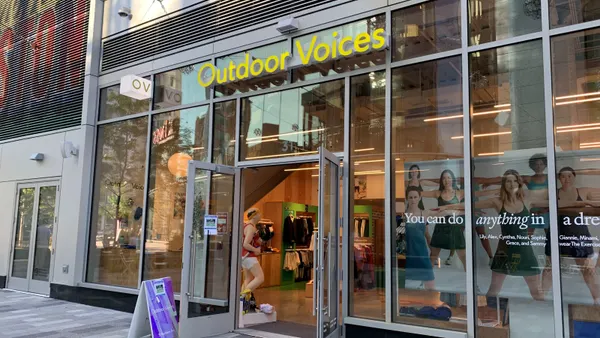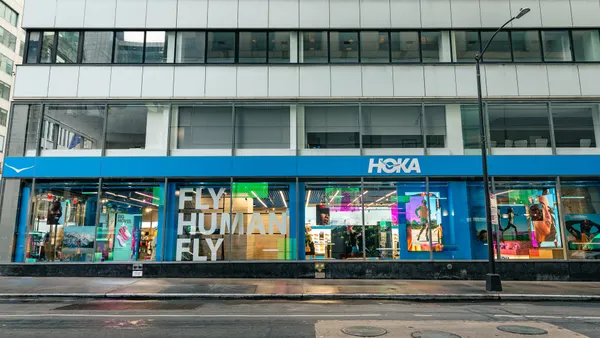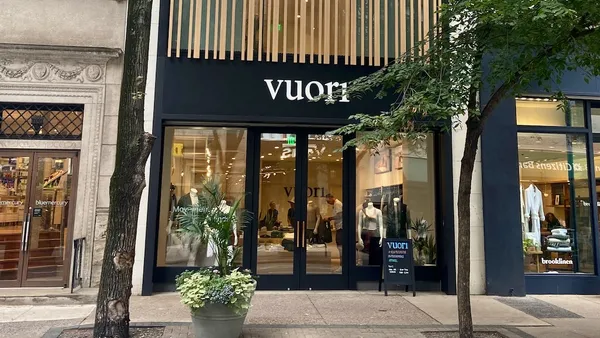Google is reportedly working on a “buy button” in an effort to wrest the momentum in m-commerce activity that’s moving to the likes of Facebook, Amazon, Alibaba, eBay, and possibly soon Instagram.
A Google buy button could certainly help Google, which has seen search decline, especially on mobile. And mobile, in turn, is itself seeing a lot of shopping activity, but not necessarily a lot of buying.
"We have long argued that Google would benefit from adding e-commerce marketplace features and functionality to search results," according to retail analysis from Baird Equity Research. "We previously suggested that an acquisition of eBay and/or PayPal would be one way to gain immediate scale; however, adding 'Buy' buttons to Google product listing ads suggests the company is building, not buying.”
But would such a thing be good or bad for retailers?
That depends, and any speculation is early because details remain sketchy and officially unconfirmed.
In the works
Considering the recent exodus of several key e-commerce executives from Google, Re/code questioned whether the program would be ready for prime time, and many predict any roll-out would be slow.
Still, the Wall Street Journal, which broke the story last week, revealed some details from sources familiar with the project, including that:
- Google plans to show a buy button when people search for products on mobile (not on desktops).
- The buttons will be part of sponsored search results, which are already displayed on a “Shop on Google” banner at the top of mobile search page, rather than on the unpaid results simply driven by Google’s search algorithm.
- Among the most drastic changes for “Shop on Google,” anyone clicking on a buy button would be sent to a Google product page rather than a retailer’s mobile site, which happens now. There they could choose details like size and shipping options and pay.
- The orders will be fulfilled by the retailers themselves, not by Google. Macy’s, according to the paper, is in talks to participate in a pilot, but Macy’s didn’t confirm.
This is bad for retailers
The report of a Google buy button has led to a rash of warnings that retailers will suffer. Above all, the process, while smoothing purchases, comes between the retailer and the customer. Add to that the fact that Google plans to share only certain details of each transaction with the retailer.
That could disrupt customer loyalty and branding, and would require robust logistics. Content could become even more important for retailers of all sizes that want to boost search.
“Most brands have done an admirable job of transitioning online to meet e-commerce competition,” writes Erika Morphy in Forbes. “But the buy button is emblematic of a much larger trend that doesn’t bode well for retailers at all: every new innovation and business model in this space is based on separating the retailer from the customer.”
This is good for retailers
But the Google buy button, at least as described so far, would allow retailers the same margins they enjoy on orders via their own sites, paying only for the kind of sponsored Google search they already pay for. This is in contrast to lower margins from the likes of Amazon. And while it’s unclear how much customer data Google would share, Google’s strong search infrastructure is already a wealth of information that retailers need these days.
Google has also been making noises about adding payment options beyond credit cards, and if the array were to include PayPal and Apple Pay (and presumably Google Wallet), that could help drive consumers to more readily actually buy. That, indeed, is really just part of what this is overall — a vastly simplified search-to-purchase path — something that retailers, in trying to meet consumers through any channel, could really use.
“If Google offers a significant advantage in visibility to merchants who adopt their button then I would be likely to jump in with both feet since the risk would be fairly low and the momentum of the program will most likely build over time,” Jeff McRitchie, marketing VP at MyBinding.com, told the CPC Strategy blog. “If the advantage to join is not overwhelming or the barrier to entry is too high (integration cost, data feeds, etc.) then I might be tempted to wait for the program to gain wider adoption before hopping on the bandwagon.”













